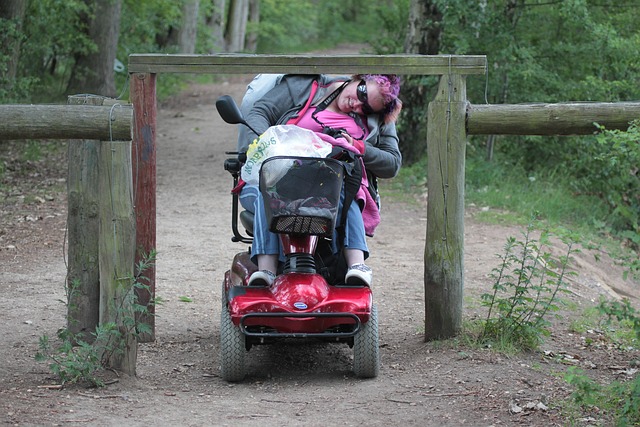Eugene, Oregon, faces the challenge of providing inclusive and accessible transportation for its diverse population, including seniors and individuals with disabilities. While current efforts like paratransit services have improved mobility, physical barriers and unmet needs persist. The city is transforming urban mobility through specialized paratransit initiatives, expanding wheelchair-accessible routes, and fostering community partnerships for senior transport programs. Eugene's goal is to create an inclusive transportation system, integrating accessible options with existing public transit, while engaging the community to ensure solutions align with real-world challenges.
Eugene, Oregon, faces unique challenges in providing accessible transportation for its diverse community. This article explores the needs of a varied transport demographic, including seniors and individuals with disabilities, who require specific solutions like wheelchair-accessible services and paratransit options. We delve into current barriers and present innovative strategies to enhance inclusive transport. By examining long-term plans and community engagement, we envision a future where every resident in Eugene can navigate the city with ease and independence.
- Understanding the Needs: A Look at Eugene Oregon's Diverse Transport Demographic
- Current Challenges: Barriers to Accessibility in the City
- Innovative Solutions: Transforming Mobility for All
- The Future of Inclusive Transport: Long-term Strategies and Community Engagement
Understanding the Needs: A Look at Eugene Oregon's Diverse Transport Demographic

Eugene, Oregon, boasts a vibrant and diverse community, and understanding its transport needs is crucial to ensuring an inclusive and accessible city. The demographic makeup of Eugene includes a significant population of seniors, many of whom rely on accessible transportation options to maintain their independence and participate in community activities. Additionally, the presence of individuals with disabilities, including those using wheelchairs, necessitates a robust network of wheelchair-accessible services and paratransit solutions.
The city’s transport challenges are varied, ranging from ensuring last-mile connectivity for those with limited mobility to providing efficient door-to-door services tailored to individual needs. Eugene’s inclusive transport vision requires a comprehensive strategy that involves public transit improvements, dedicated paratransit systems, and community partnerships. By addressing these needs, the city can foster a more accessible environment, promoting social inclusion and enhancing the overall quality of life for all its residents.
Current Challenges: Barriers to Accessibility in the City

The city of Eugene, Oregon, faces several challenges when it comes to providing accessible transportation options for its residents, including those with disabilities, seniors, and individuals using wheelchairs. One significant barrier is the lack of comprehensive wheelchair accessibility throughout the city’s public transport network. While efforts have been made to improve paratransit services catering to individuals with disabilities, many routes still present physical obstacles, making it difficult for disabled persons to navigate the urban landscape independently.
Additionally, the current transportation system in Eugene may not adequately accommodate the diverse needs of its aging population. Seniors often require accessible options for longer-distance travel, which is where inclusive transport solutions could make a substantial difference. Enhancing paratransit services with specialized vehicles and trained personnel can ensure that elderly residents have access to essential services and community activities, promoting their independence and overall well-being.
Innovative Solutions: Transforming Mobility for All

In Eugene, Oregon, the push for accessible transportation has sparked innovative solutions aimed at transforming mobility for all citizens, including those with disabilities, seniors, and individuals using wheelchairs. The city has recognized the need for comprehensive disabled transport options that go beyond traditional bus services, leading to the development of specialized paratransit services tailored to diverse needs. These initiatives ensure that everyone can navigate the city with ease and independence.
One notable example is the expansion of wheelchair accessible vehicles and routes, making public transit more inclusive for those who require them. Additionally, community partnerships have fostered programs that offer door-to-door senior transport, further enhancing accessibility. These efforts not only address physical barriers but also promote social inclusion, enabling all residents to participate fully in community life.
The Future of Inclusive Transport: Long-term Strategies and Community Engagement

The future of transportation in Eugene, Oregon, lies in creating an inclusive system that caters to all residents, regardless of their abilities or ages. Long-term strategies should focus on expanding and enhancing accessible transport options to ensure everyone can navigate the city with ease. This includes investing in modern paratransit services tailored for individuals with disabilities and seniors who may require specialized assistance. By implementing these services alongside the existing wheelchair-accessible public transport, Eugene can become a leader in disabled transport.
Community engagement is key to designing an effective inclusive transport system. Involving local organizations, transportation advocates, and residents with diverse needs will foster solutions that resonate with the community. This collaborative approach ensures that future developments cater to real-world challenges, creating a seamless and welcoming urban mobility experience for all Eugene citizens.
